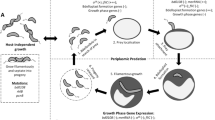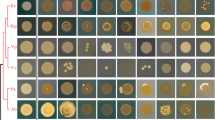Abstract
Members of the genus Bdellovibrio exist as obligate predators of other gram-negative bacilli. They are believed to require large numbers of prey bacteria (>104 ml−1) to survive. Although prey bacteria are essential to the survival of bdellovibrio populations, and to studies of the predator's role in nature, the number of bdellovibrio-susceptible bacteria in environmental samples has not been investigated. This study quantified bacteria that were susceptible to predation by the bdellovibrios. Bacteria recovered from water, sediment, and oyster-shell surface epibiota at various sites in the Chesapeake Bay system were tested for their susceptibility to bdellovibrios collected from homologous sites. The mean number (log10) of susceptible bacterial colonies recovered by culture was 3.33 ml−1 in water, 4.14 ml−1 in sediment and 5.76 ml−1 from oyster shells. Seventy three to 85% of all isolates tested were susceptible to bdellovibrios. Considering the actual number of bacteria in most environments is estimated to be 100 to 1000-fold greater than measured by culturing, the number of bdellovibrio-susceptible bacteria in the three environments sampled is probably sufficient to support the growth of the bdellovibrios.
Similar content being viewed by others
Author information
Authors and Affiliations
Additional information
Received: 27 May 1997; Accepted: 14 October 1997
Rights and permissions
About this article
Cite this article
Rice, T., Williams, H. & Turng, B. Susceptibility of Bacteria in Estuarine Environments to Autochthonous Bdellovibrios. Microb Ecol 35, 256–264 (1998). https://doi.org/10.1007/s002489900081
Issue Date:
DOI: https://doi.org/10.1007/s002489900081




